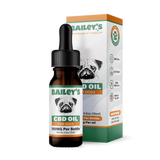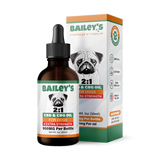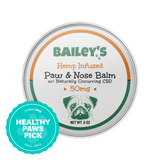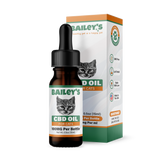Peterbald Cat: Distinct Feline Breed Traits
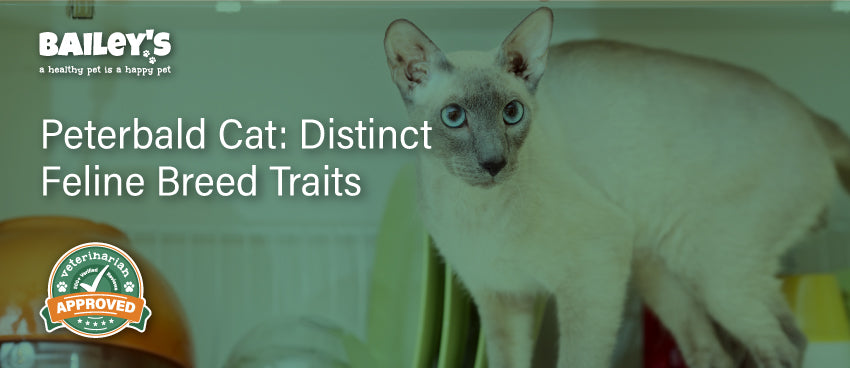
The Peterbald cat is a rare and unique feline breed that possesses distinct traits and characteristics. Understanding this breed is essential for those who are considering adding a Peterbald to their family or simply seeking more information about these fascinating cats.

Here in this article, the friendly crew at Bailey’s CBD will shed some light on the origin and history of Peterbald cats, explore their physical characteristics, delve into their personalities and temperament, discuss their health and lifespan, provide insights into caring for them, and touch upon breeding and genetics. By the end, readers will have a comprehensive understanding of the captivating Peterbald cat breed.
Table of Contents
1. Understanding the Peterbald Cat Breed
1.1 Origin and History of Peterbald Cats
The Peterbald breed has a relatively recent history, originating in Russia in the late 20th century. It all began when a Russian breeder, Olga Mironova, crossed a Don Hairless (now known as the Donskoy cat) with an Oriental Shorthair. The result was a unique feline with a hair-losing gene, but with various coat types. Thus, the Peterbald was born.
Olga Mironova's experiment in breeding cats with different coat types was met with both curiosity and skepticism. Many wondered if a hairless cat could truly thrive and be a suitable companion. However, as the Peterbalds began to grow and develop, it became evident that they possessed not only an intriguing appearance but also a charming personality.
Since its creation, the Peterbald breed has gained recognition and popularity worldwide due to its striking appearance and endearing personality. Breeders and cat enthusiasts around the globe have embraced these unique felines, appreciating their distinct features and affectionate nature.
1.2 Physical Characteristics of Peterbald Cats
Peterbalds exhibit a wide range of physical characteristics, including their coat types, body shape, and overall appearance. One standout feature of the breed is its hairlessness, which ranges from completely bald to having a fine, short coat known as "velour." Some Peterbalds may even possess a coat type known as "brush," characterized by a sparse but noticeable covering of wiry hair.
The hairlessness of Peterbalds is not only a visual trait but also affects their tactile experience. When you touch a hairless Peterbald, you will notice that their skin feels warm and soft, almost like touching a heated velvet surface. This unique texture adds to the allure of these cats, making them irresistible to pet and cuddle.
Regardless of their coat type, Peterbalds typically have sleek bodies with long, elegant limbs. Their muscular build allows them to move with grace and agility. When they walk, their movements are almost fluid, as if they are gliding effortlessly across the room. This elegant gait is one of the many reasons why Peterbalds are often compared to ballerinas.
Their head shape is often described as wedge-shaped, with large, almond-shaped eyes that come in various colors. The intensity of their gaze is captivating, and their eyes seem to reflect their intelligence and curiosity. When a Peterbald looks at you, it feels as if they are peering into your soul, understanding your thoughts and emotions.
The breed's unique appearance is further enhanced by their large ears, which are set wide apart on the head. These ears are not only aesthetically pleasing but also serve a practical purpose. They are highly sensitive and allow the Peterbald to pick up even the faintest sounds, making them excellent hunters and alert companions.

2. Personality and Temperament of Peterbald Cats
Peterbald cats have a unique personality and temperament that sets them apart from other breeds. Their highly sociable nature and love for human companionship make them a popular choice for cat lovers. These cats thrive in households with active and involved owners who can provide them with the attention and interaction they crave.
When it comes to social behavior, Peterbalds are known for forming strong bonds with their human family members. They enjoy being part of the household activities and will often follow their owners around, curious about everything that is going on. Whether it's helping with chores or simply lounging on the couch, Peterbalds want to be involved in every aspect of their owners' lives.
Not only do Peterbalds enjoy the company of humans, but they also typically get along well with other pets. They have a friendly and outgoing demeanor that enables them to build positive relationships with both humans and animals. This makes them a great addition to multi-pet households, where they can bring joy and companionship to everyone in the family.
2.1 Activity Level and Playfulness
If you're looking for an active and energetic cat, the Peterbald might be the perfect fit for you. These cats have a high activity level and require mental and physical stimulation to keep them happy and content. Engaging in playtime with your Peterbald not only provides them with exercise but also strengthens the bond between you and your cat.
When it comes to play, Peterbalds are always up for a good time. They enjoy interactive play sessions, where they can chase toys, pounce on feather wands, and show off their agility. Puzzle toys are also a great way to keep their minds sharp and entertained. These intelligent cats love the challenge of figuring out how to get to the treats hidden inside.
While Peterbalds are known for their playful nature, it's important to note that they also have a sensitive side. They may require a quiet retreat to relax and recharge. Providing them with a cozy and calm space in the household will ensure their well-being. This can be a designated cat bed in a quiet corner or a cat tree where they can observe their surroundings from a safe distance.
Peterbald cats are highly sociable and thrive on human companionship. They form strong bonds with their owners and enjoy being part of the household activities. Their friendly and outgoing demeanor allows them to get along well with other pets, making them a great addition to multi-pet households. With their high activity level and love for play, Peterbalds require mental and physical stimulation to keep them happy. However, they also have a sensitive nature and may require a quiet retreat to relax and recharge. Providing them with a cozy and calm space in the household will ensure their well-being.
3. Health and Lifespan of Peterbald Cats
Peterbald cats are a unique and fascinating breed known for their hairless or thin-coated nature. Despite their distinctive appearance, they are considered a relatively healthy breed overall. However, like all cat breeds, they can be prone to certain health issues.
3.1 Common Health Issues in Peterbald Cats
One potential health concern for Peterbalds is sunburn. Due to their lack of fur or thin coat, their skin is more vulnerable to the harmful effects of excessive sun exposure. Owners should take necessary precautions and protect their Peterbalds from prolonged sun exposure to prevent skin damage. This can be done by providing them with shaded areas, using pet-safe sunscreen, and limiting their time outdoors during peak sun hours.
In addition to sunburn, dental disease is another condition that may affect Peterbald cats. Just like humans, cats can develop plaque, tartar, and gum disease if their dental hygiene is not properly maintained. Regular dental care, including daily tooth brushing with pet-friendly toothpaste and professional cleanings, can help prevent dental issues and maintain oral health. It is important to start dental care routines early in a Peterbald cat's life to get them accustomed to the process.
3.2 Average Lifespan of Peterbald Cats
The average lifespan of Peterbald cats is typically around 10 to 15 years. However, with proper care and attention, some Peterbalds have been known to live well into their late teens or even early twenties. To ensure a long and healthy life for your Peterbald, it is crucial to provide them with a nutritious diet tailored to their specific needs.
Regular veterinary check-ups are also essential for monitoring their overall health and catching any potential issues early on. Vaccinations, parasite prevention, and routine blood work are important components of their healthcare regimen. Additionally, maintaining a stress-free and loving environment can greatly contribute to the well-being and longevity of these marvelous felines.
While Peterbald cats may have some specific health considerations due to their unique coat, they are generally a healthy breed. By taking proactive measures to protect their skin from sunburn and maintaining their dental health, owners can help ensure a happy and healthy life for their Peterbald companions. With proper care, these remarkable cats can bring joy and companionship for many years to come.
4. Caring for Your Peterbald Cat
4.1 Grooming Needs of Peterbald Cats
Despite their hairlessness, Peterbalds do require some grooming. Their skin should be kept clean by wiping it with a damp cloth to remove any oils or dirt. Additionally, regular bathing is necessary to maintain their skin health. It is important to use cat-friendly, hypoallergenic shampoos to avoid skin irritations.
Furthermore, as hairless or velour-coated cats, Peterbalds are vulnerable to temperature changes. Providing them with cozy blankets or heated beds during colder months can help keep them warm and comfortable.
4.2 Dietary Requirements for Peterbald Cats
Proper nutrition is vital for the overall health and well-being of Peterbald cats. A high-quality, balanced diet specifically formulated for cats should be provided. It is essential to consult with a veterinarian to determine the appropriate portion size and nutrient requirements, including high-quality supplements, for your specific Peterbald based on factors such as age, weight, activity level, and any underlying health conditions.

5. Breeding and Genetics of Peterbald Cats
5.1 Understanding Peterbald Cat Genetics
As mentioned earlier, the Peterbald breed originated from crossing a Don Hairless (Donskoy) and an Oriental Shorthair. The hair-losing gene responsible for their unique coats is inherited in an autosomal dominant manner, meaning a Peterbald cat only needs to inherit the gene from one parent to exhibit hairlessness or a velour/brush coat type.
When selectively bred, Peterbald cats can produce offspring with various coat types, allowing breeders to maintain and improve the Peterbald breed's diversity.
5.2 The Breeding Process of Peterbald Cats
Responsible breeders carefully select mating pairs to ensure healthy and genetically diverse litters. Breeding Peterbald cats requires expertise and knowledge of the breed's genetics to avoid undesirable traits or health issues.
During the breeding process, breeders may consider factors such as coat type, body structure, and temperament when selecting breeding pairs. This careful selection helps maintain the breed standard and contributes to the long-term health and well-being of the Peterbald breed.



